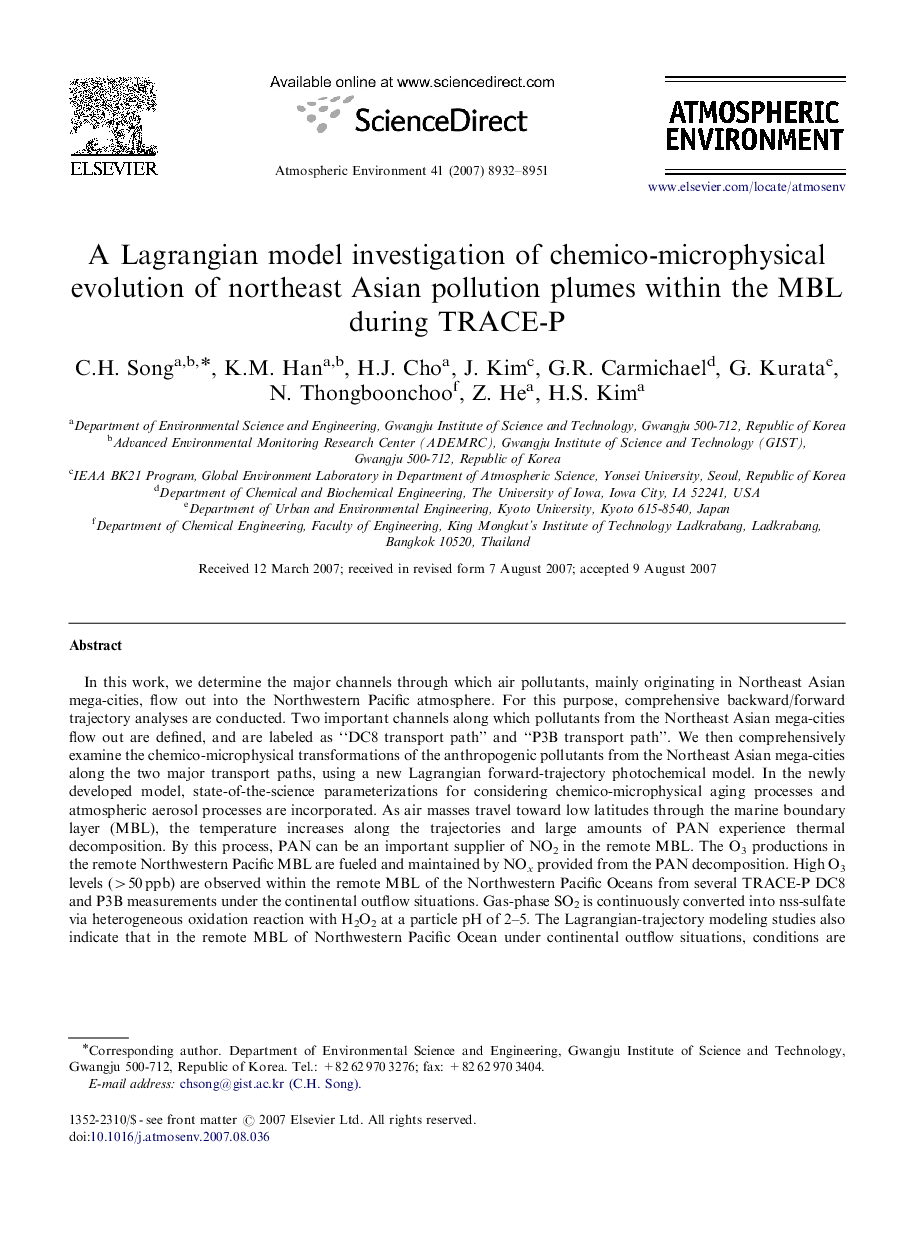| Article ID | Journal | Published Year | Pages | File Type |
|---|---|---|---|---|
| 4443140 | Atmospheric Environment | 2007 | 20 Pages |
In this work, we determine the major channels through which air pollutants, mainly originating in Northeast Asian mega-cities, flow out into the Northwestern Pacific atmosphere. For this purpose, comprehensive backward/forward trajectory analyses are conducted. Two important channels along which pollutants from the Northeast Asian mega-cities flow out are defined, and are labeled as “DC8 transport path” and “P3B transport path”. We then comprehensively examine the chemico-microphysical transformations of the anthropogenic pollutants from the Northeast Asian mega-cities along the two major transport paths, using a new Lagrangian forward-trajectory photochemical model. In the newly developed model, state-of-the-science parameterizations for considering chemico-microphysical aging processes and atmospheric aerosol processes are incorporated. As air masses travel toward low latitudes through the marine boundary layer (MBL), the temperature increases along the trajectories and large amounts of PAN experience thermal decomposition. By this process, PAN can be an important supplier of NO2 in the remote MBL. The O3 productions in the remote Northwestern Pacific MBL are fueled and maintained by NOx provided from the PAN decomposition. High O3 levels (>50 ppb) are observed within the remote MBL of the Northwestern Pacific Oceans from several TRACE-P DC8 and P3B measurements under the continental outflow situations. Gas-phase SO2 is continuously converted into nss-sulfate via heterogeneous oxidation reaction with H2O2 at a particle pH of 2–5. The Lagrangian-trajectory modeling studies also indicate that in the remote MBL of Northwestern Pacific Ocean under continental outflow situations, conditions are unfavorable for nucleation events, because of the depletion of SO2, the large aerosol surface areas available for H2SO4 sink, and high temperatures.
